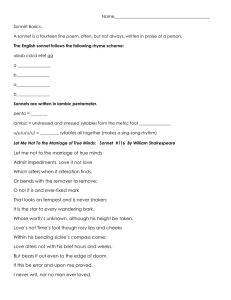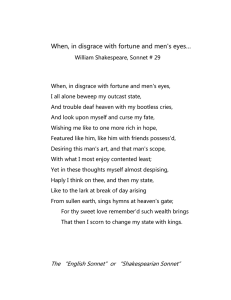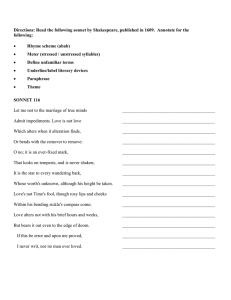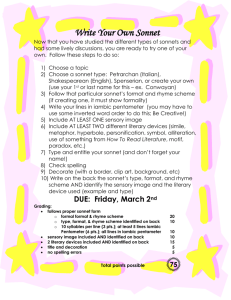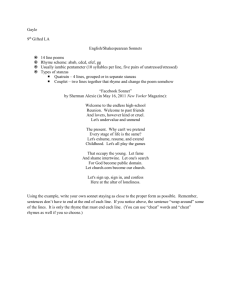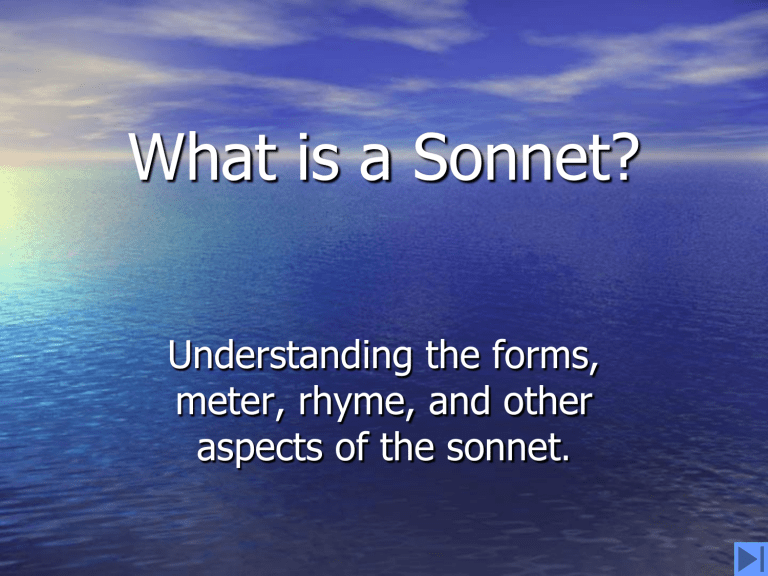
What is a Sonnet? Understanding the forms, meter, rhyme, and other aspects of the sonnet. Sonnet Form • A sonnet has 14 lines. • A sonnet must be written in iambic pentameter • A sonnet must follow a specific rhyme scheme, depending on the type of sonnet. • A sonnet can be about any subject, though they are often about love or nature. • A sonnet introduces a problem or question in the beginning, and a resolution is offered after the turn. Iambic Pentameter • A line of Iambic Pentameter is a line with ten beats. • An “Iamb” is two beats, or one “foot.” • “Penta” is five (line has five “feet”). • “Meter” is the rhythm of the poem. • A “foot” is made of an unstressed syllable and a stressed syllable (in that order). English Sonnet • An English Sonnet is also called a Shakespearean Sonnet. • It includes three quatrains (groups of four lines) and a couplet (two lines). • The rhyme scheme is often abab cdcd efef gg. • The turn is either after eight lines or ten lines. Spenserian Sonnet A variation of the English sonnet, it was invented by 16th century poet Edmund Spenser. It follows Shakespeare with 3 quatrains and a couplet, but it employs a series of couplet links between quatrains through a rhyme scheme of abab, bcbc, cdcd, ee. Italian Sonnet • An Italian Sonnet is also called a Petrarchan • • • Sonnet. It includes an octave (eight lines) and a sestet (six lines). The rhyme scheme must begin with abbaabba, and can conclude with any variation of c, d, and e (cdecde, cdcdee, etc.). The turn must occur between the octave and the sestet.
